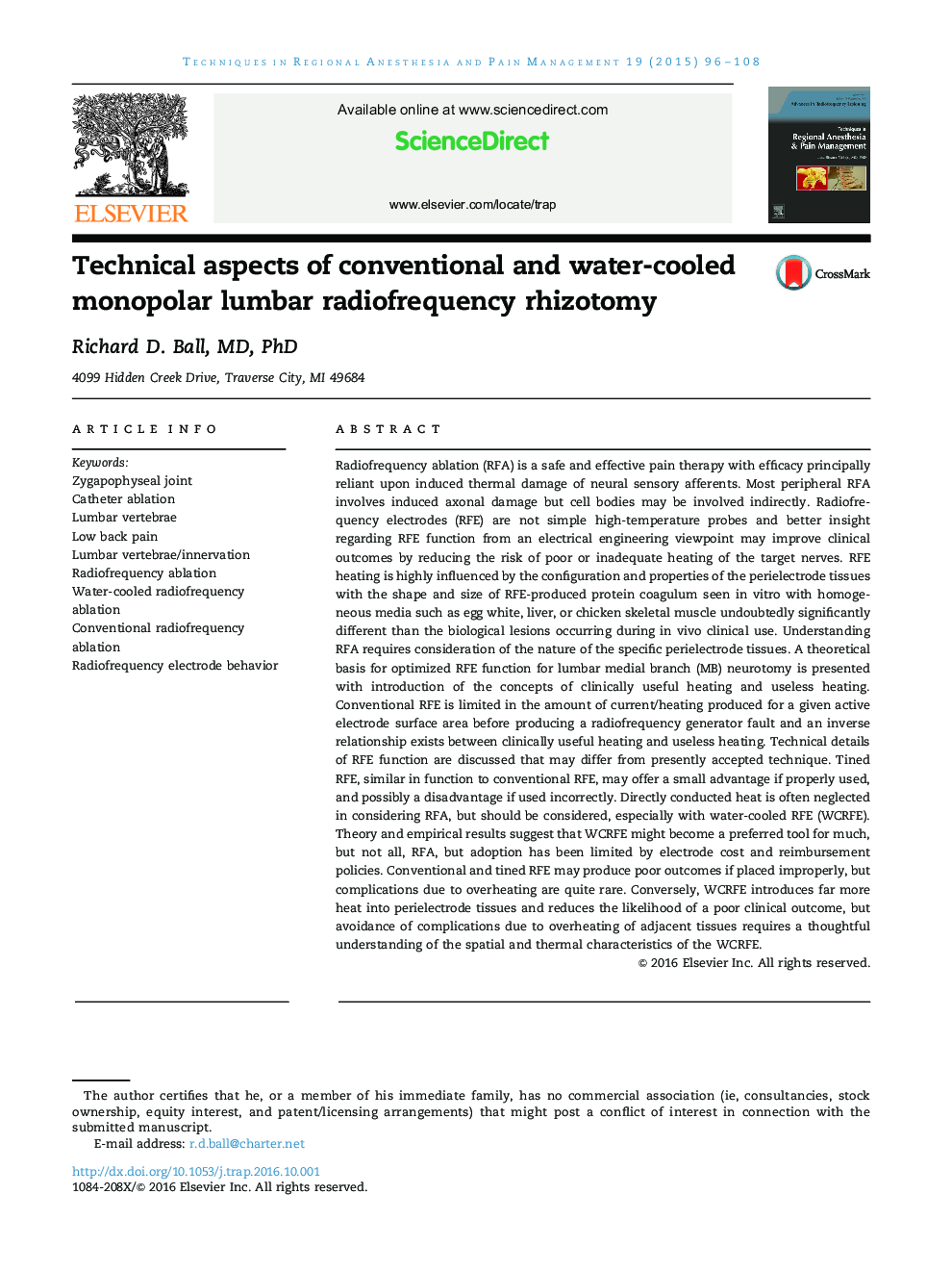| کد مقاله | کد نشریه | سال انتشار | مقاله انگلیسی | نسخه تمام متن |
|---|---|---|---|---|
| 5584077 | 1567862 | 2015 | 13 صفحه PDF | دانلود رایگان |
عنوان انگلیسی مقاله ISI
Technical aspects of conventional and water-cooled monopolar lumbar radiofrequency rhizotomy
ترجمه فارسی عنوان
جنبه های فنی ریزوتومی رادیویی کمربندی مونومورال و آب سرد
دانلود مقاله + سفارش ترجمه
دانلود مقاله ISI انگلیسی
رایگان برای ایرانیان
کلمات کلیدی
مفصل زایپافیزه، سوند کاتتر، مهره های کمری، کمر درد، مهره های کمری / ناباروری، فرسایش بسامد رادیویی، دفع رادیو اکتیو آب خنک کننده، دفع رادیویی فراوان متعارف، رفتار الکترود رادیوی فرکانس،
موضوعات مرتبط
علوم پزشکی و سلامت
پزشکی و دندانپزشکی
بیهوشی و پزشکی درد
چکیده انگلیسی
Radiofrequency ablation (RFA) is a safe and effective pain therapy with efficacy principally reliant upon induced thermal damage of neural sensory afferents. Most peripheral RFA involves induced axonal damage but cell bodies may be involved indirectly. Radiofrequency electrodes (RFE) are not simple high-temperature probes and better insight regarding RFE function from an electrical engineering viewpoint may improve clinical outcomes by reducing the risk of poor or inadequate heating of the target nerves. RFE heating is highly influenced by the configuration and properties of the perielectrode tissues with the shape and size of RFE-produced protein coagulum seen in vitro with homogeneous media such as egg white, liver, or chicken skeletal muscle undoubtedly significantly different than the biological lesions occurring during in vivo clinical use. Understanding RFA requires consideration of the nature of the specific perielectrode tissues. A theoretical basis for optimized RFE function for lumbar medial branch (MB) neurotomy is presented with introduction of the concepts of clinically useful heating and useless heating. Conventional RFE is limited in the amount of current/heating produced for a given active electrode surface area before producing a radiofrequency generator fault and an inverse relationship exists between clinically useful heating and useless heating. Technical details of RFE function are discussed that may differ from presently accepted technique. Tined RFE, similar in function to conventional RFE, may offer a small advantage if properly used, and possibly a disadvantage if used incorrectly. Directly conducted heat is often neglected in considering RFA, but should be considered, especially with water-cooled RFE (WCRFE). Theory and empirical results suggest that WCRFE might become a preferred tool for much, but not all, RFA, but adoption has been limited by electrode cost and reimbursement policies. Conventional and tined RFE may produce poor outcomes if placed improperly, but complications due to overheating are quite rare. Conversely, WCRFE introduces far more heat into perielectrode tissues and reduces the likelihood of a poor clinical outcome, but avoidance of complications due to overheating of adjacent tissues requires a thoughtful understanding of the spatial and thermal characteristics of the WCRFE.
ناشر
Database: Elsevier - ScienceDirect (ساینس دایرکت)
Journal: Techniques in Regional Anesthesia and Pain Management - Volume 19, Issues 3â4, July 2015, Pages 96-108
Journal: Techniques in Regional Anesthesia and Pain Management - Volume 19, Issues 3â4, July 2015, Pages 96-108
نویسندگان
Richard D. MD, PhD,
